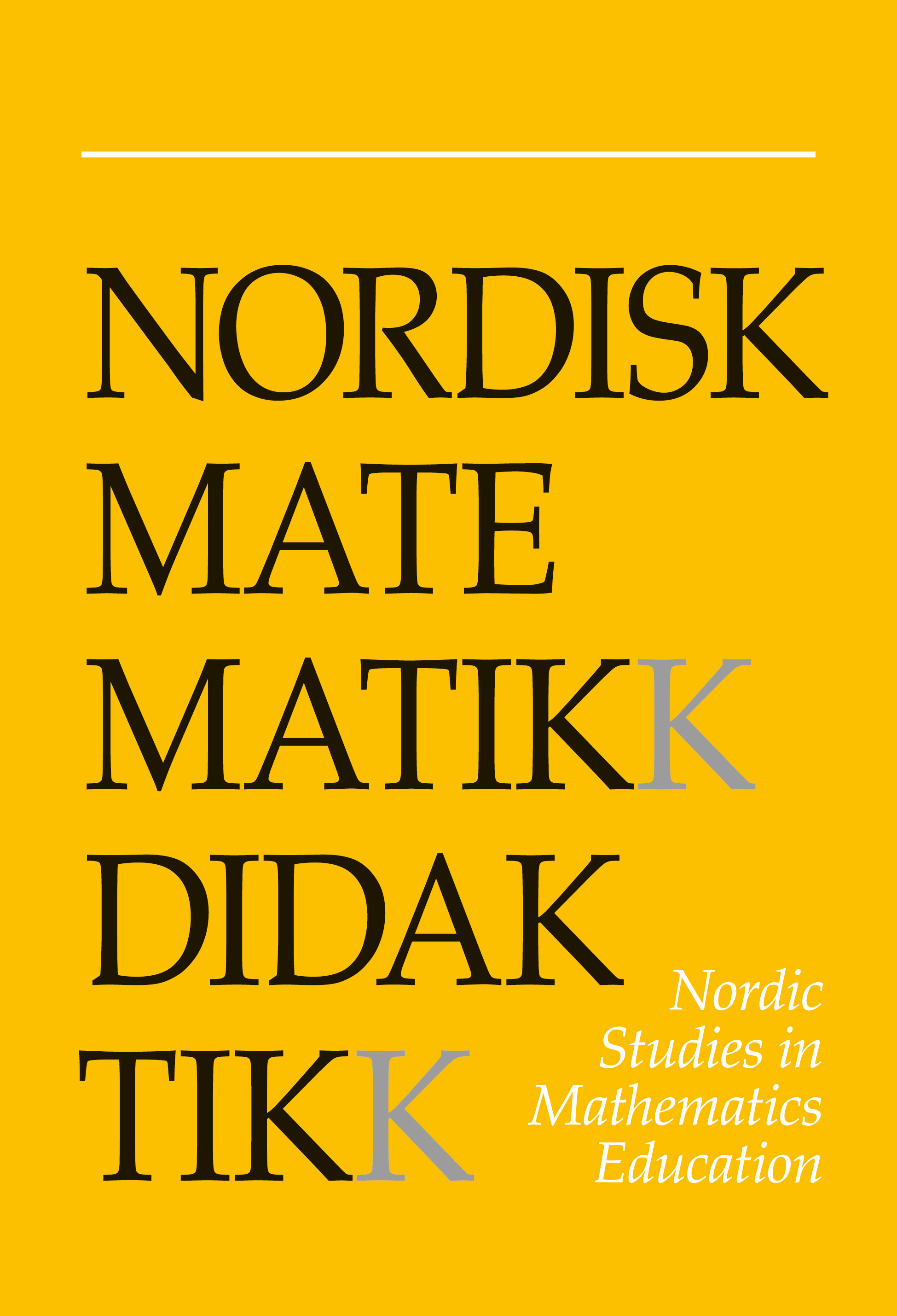The use of reasoning in the resolution of geometric problems
DOI:
https://doi.org/10.7146/nomad.v11i3.147991Abstract
The cognitive processes of 15-year-old students, when they solve geometrical problems involving the construction of isosceles triangles, and the different forms of rea- soning which they use, are investigated in this paper. First we explore the large variety of reasoning processes which appear, categorize them in three approaches (visual, heuristic and theoretical) and look at the language which is used by each one. Then we focus on the weaknesses of students’ reasoning and examine their reasons. The analysis of the data intends to support teachers to recognize and understand the relationship between students’ reasoning (nature of justification) and their geometrical thought.
References
Anderson,J. (2000). Cognitive psychology and its implications. New York: Worth Publishers.
Bell, A. (1976). A study pupils' proof-explanations in mathematical situations. Educational Studies in Mathematics, 7 (1-2), 23-40. https://doi.org/10.1007/BF00144356
Chazan, D. (1993). High school geometry students' justification for their views of empirical evidence and mathematical proof. Educational Studies in Mathematics, 24 (4), 359-387. https://doi.org/10.1007/BF01273371
De Villiers, M. (1996). Why proof in dynamic geometry? In de Villiers (Ed.), Proofs and proving: why, when and how? (pp.24-42). Centrahil, South Africa: Association for Mathematics Education of South Africa.
Duval, R. (1998). Geometry from a cognitive point of view. In C. Mammana & V. Villani (Eds.), Perspectives on the teaching of geometry for the 21st century (pp. 37-52). Dordrecht: Kluwer.
Duval, R. (2001, July). The cognitive analysis of problems of comprehension in the learning of mathematics. Presentation at PME 25 in the discussion group "semiotics in mathematics education", Utrecht, The Netherlands.
Duval, R. (2002). Representation, vision and visualization: cognitive functions in mathematical thinking. Basic issues for learning. In Hitt, F.& Santos, M. (Eds.) (1999). Proceedings of the 21st Annual Meeting of the North American Chapter of the International Group for the Psychology of Mathematics Education. Columbus, OH:ERIC Clearinghouse for Science, Mathematics, and Environmental Education.
Fischbein, E. (1982). Intuition and proof. For the Learning of Mathematics, 3 (2), 9-18.
Fischbein, E. (1999). Intuitions and schemata in mathematical reasoning. Educational Studies in Mathematics, 38 (1-3), 11-50. https://doi.org/10.1023/A:1003488222875
Kabani, E. (2003). Representations in mathematical problem solving (Ph. D. dissertation). University of Ioannina, Greece.
Mariotti, M.A. (1997). Justifying and proving in geometry: the mediation of a microworld Revised and extended version of the version published in Henjy M. & Novotna J. (Eds.), Proceedings of the European Conference on Mathematics Education (pp.21-26). Prague: Prometheus Publishing House.
Mariotti,M.A., Bartolini M, Boero P., Ferri F. & Garuti R., (1997). Approaching geometry theorems in contexts: from history and epistemology to cognition. In Pehkonen, E. (Ed.) Proceedings of the 21st PME Conference. University of Helsinki.
Mesquita, A. L. (1998). On conceptual obstacles linked with external repre- sentation in geometry. Journal of Mathematical Behavior, 17 (2), 183-195. https://doi.org/10.1016/S0364-0213(99)80058-5
Rodd, M. M. (2000). On mathematical warrants: proof does not always warrant, and warrant may be other than proof. Mathematical Thinking and Learning, 2 (3), 221-244. https://doi.org/10.1207/S15327833MTL0203_4
Shriki, A. & Bar-On E. (1997). Theory of global and local coherence and applications to geometry. In Pehkonen, E. (Ed.) Proceedings of the 21st PME Conference. University of Helsinki.
Downloads
Published
How to Cite
Issue
Section
License

This work is licensed under a Creative Commons Attribution-NonCommercial-ShareAlike 4.0 International License.



